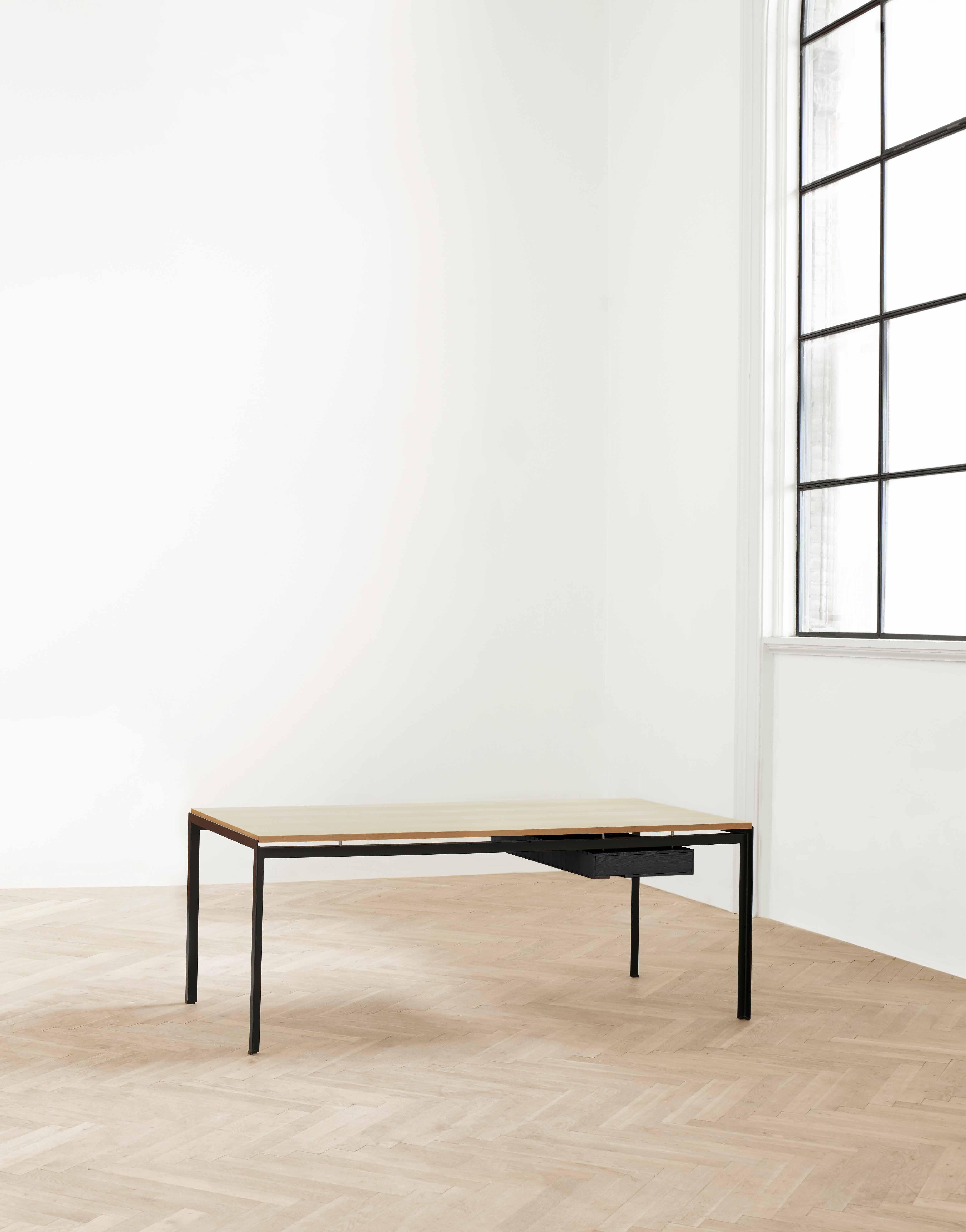
2 minute read
Poul Kjærholm
CLASSIC HAND-CRAFTED DETAILS
The PK52 Professor Desk, together with the smaller PK52A Student Desk, designed for the Royal Danish Academy of Fine Arts, established Poul Kjærholm’s reputation for uniting the best of traditional craftsmanship and industrial design.
Advertisement
The Academy needed a number of tables for lecturers and students, and Kjærholm, who had recently joined the academic staff, designed a pair of bespoke tables for the occasion: the larger PK52 Professor Desk and more compact PK52A Student Desk. Drawing on his cabinetmaking experience, Kjærholm developed a new table structure that showcased his mastery of steel and wood. Metal ferrules separate the steel and wood to lend these desks a dynamic, light appearance and highlight his signature ability to unite traditional craftsmanship and industrial design. Both desks offer reversible tabletops, allowing the user to work on both sides – or use one side for work and the other for meals. They embody the lightness and simple, geometric elegance for which the designer became renowned and established Kjærholm’s pioneering role in Danish functionalism. They also confirmed his position as one of the world’s leading furniture designers. An optional drawer in both desks offers elegant storage space, and both can easily double as dining tables.
1929 – 1980
Through his work as a designer and teacher, Poul Kjærholm became an influential representative of modern design in the 20th century. Kjærholm combined a strict, modernist idiom with an uncompromising approach to quality and materials rooted in the traditions of Danish craftsmanship.
After training as a cabinetmaker, Poul Kjærholm studied furniture design at the Royal Danish Academy of Fine Arts in Copenhagen, graduating in 1952. Like Kaare Klint, Kjærholm worked to remove ornamentation from his designs, favoring simple functionality. In the post-war years, Kjærholm distanced himself from the round, organic shapes of contemporary design in favor of industrial steel, leather, and glass furniture. Kjærholm returned to the Academy as a lecturer in 1955, succeeding Ole Wanscher as professor in 1976, where he taught until his death in 1980.
During his life, Poul Kjærholm received numerous design awards and, today, his work is represented in many international museums, including the Museum of Modern Art in New York City. Despite a relatively short career as a furniture designer, Kjærholm’s unique vision resulted in furniture designs whose influence has continued well beyond his own lifetime.
POUL KJÆRHOLM

Like Kaare Klint, Poul Kjærholm removed ornamentation from his furniture in favour of work rooted in clarity and functionality – the hallmarks in his work as both an educator and a designer. During his career, Kjærholm avoided easy solutions and fads in his search for each material’s own, authentic language.










